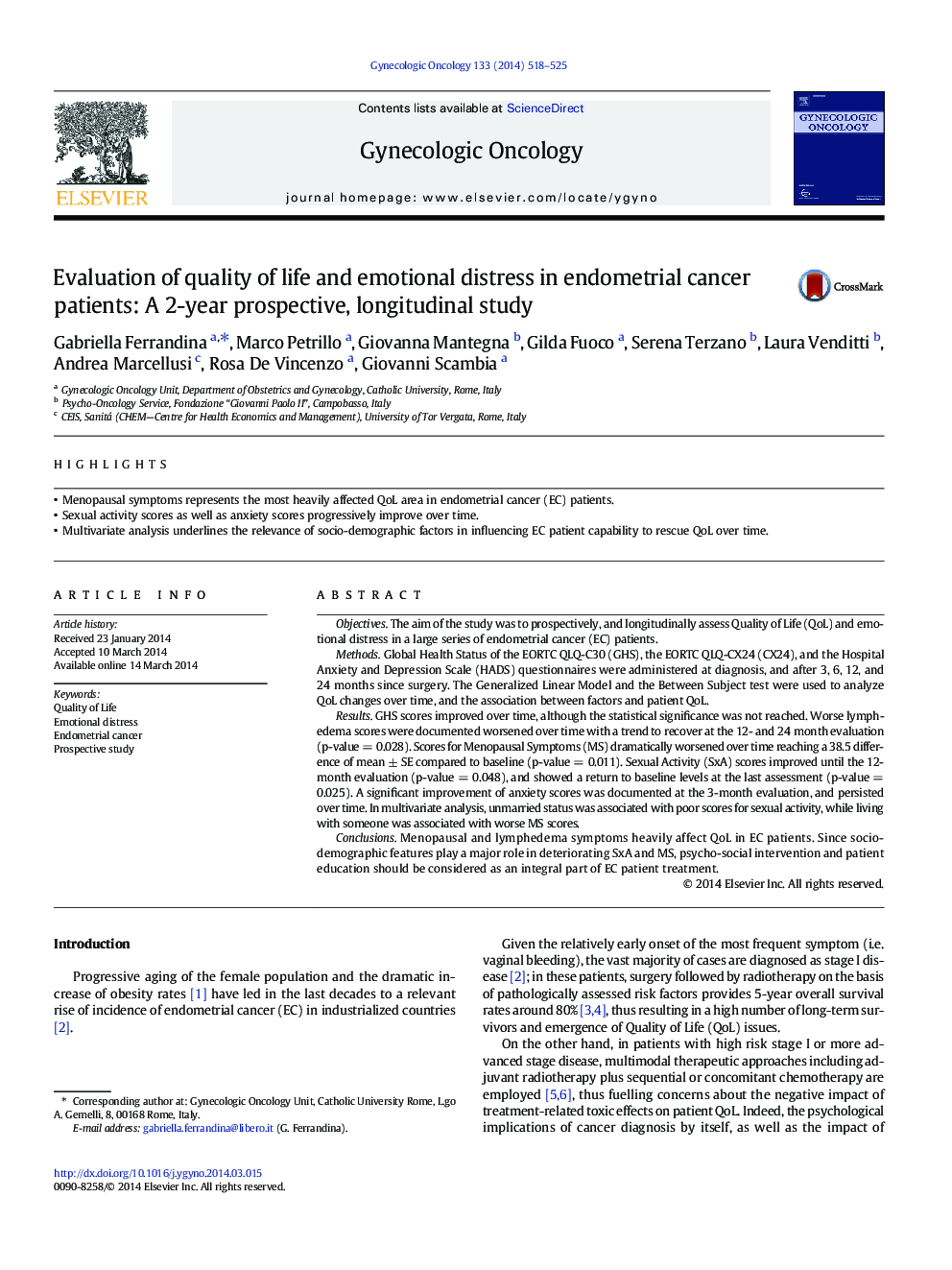| Article ID | Journal | Published Year | Pages | File Type |
|---|---|---|---|---|
| 3944612 | Gynecologic Oncology | 2014 | 8 Pages |
•Menopausal symptoms represents the most heavily affected QoL area in endometrial cancer (EC) patients.•Sexual activity scores as well as anxiety scores progressively improve over time.•Multivariate analysis underlines the relevance of socio-demographic factors in influencing EC patient capability to rescue QoL over time.
ObjectivesThe aim of the study was to prospectively, and longitudinally assess Quality of Life (QoL) and emotional distress in a large series of endometrial cancer (EC) patients.MethodsGlobal Health Status of the EORTC QLQ-C30 (GHS), the EORTC QLQ-CX24 (CX24), and the Hospital Anxiety and Depression Scale (HADS) questionnaires were administered at diagnosis, and after 3, 6, 12, and 24 months since surgery. The Generalized Linear Model and the Between Subject test were used to analyze QoL changes over time, and the association between factors and patient QoL.ResultsGHS scores improved over time, although the statistical significance was not reached. Worse lymphedema scores were documented worsened over time with a trend to recover at the 12- and 24 month evaluation (p-value = 0.028). Scores for Menopausal Symptoms (MS) dramatically worsened over time reaching a 38.5 difference of mean ± SE compared to baseline (p-value = 0.011). Sexual Activity (SxA) scores improved until the 12-month evaluation (p-value = 0.048), and showed a return to baseline levels at the last assessment (p-value = 0.025). A significant improvement of anxiety scores was documented at the 3-month evaluation, and persisted over time. In multivariate analysis, unmarried status was associated with poor scores for sexual activity, while living with someone was associated with worse MS scores.ConclusionsMenopausal and lymphedema symptoms heavily affect QoL in EC patients. Since socio-demographic features play a major role in deteriorating SxA and MS, psycho-social intervention and patient education should be considered as an integral part of EC patient treatment.
